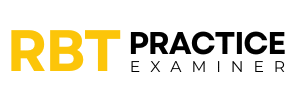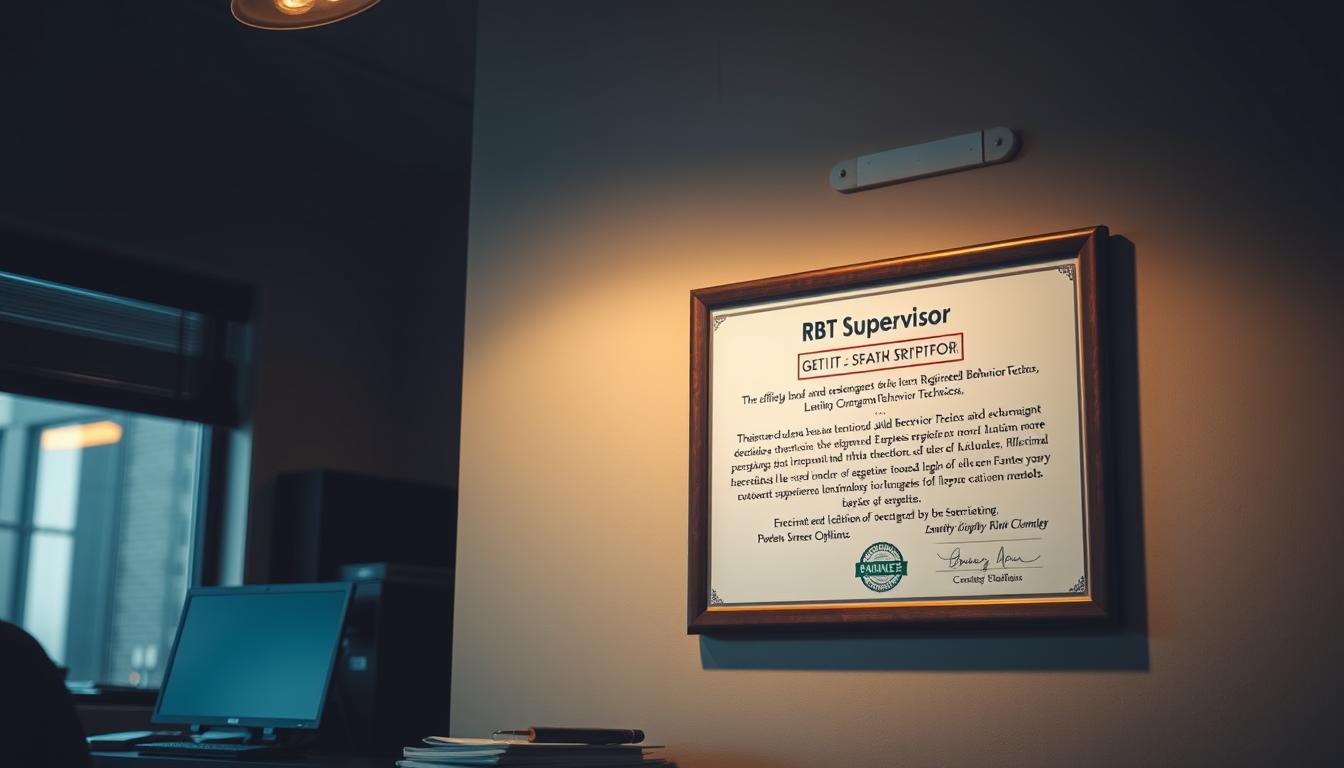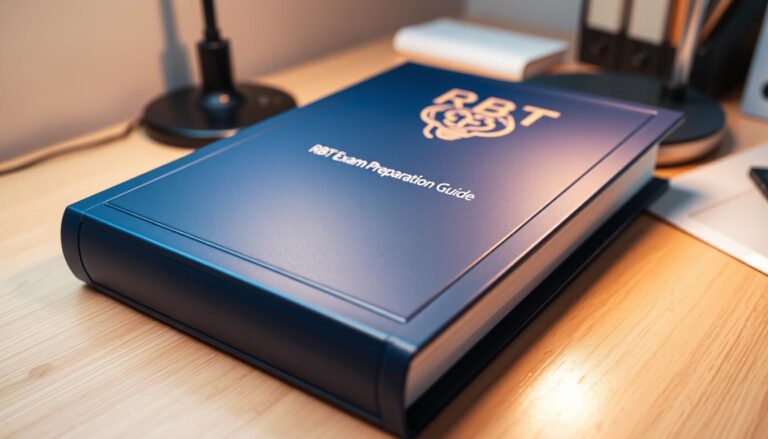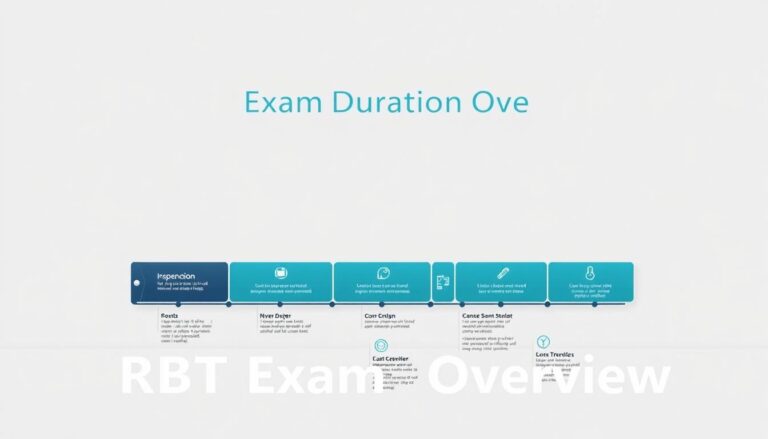Understanding RBT Supervision: Who Can and Can’t Be Your Supervisor?
Registered Behavior Technician (RBT) supervision is key in quality behavioral healthcare. It ensures RBTs give top care and follow strict ethical rules. Knowing who can be a supervisor is vital for both RBTs and organizations aiming for the best in applied behavior analysis.
The rules for RBT supervision are complex. They protect clients and keep the profession honest. Not everyone can be a supervisor. It’s important to find the right people for the job.
When looking for a supervisor, consider their certifications, experience, and training in applied behavior analysis. Knowing who can’t be a supervisor helps RBTs avoid problems and follow industry rules.
This article will explore the world of RBT supervision. We’ll look at qualifications, laws, and best practices for overseeing RBTs in behavioral healthcare.
The Fundamentals of RBT Supervision Requirements
Registered Behavior Technician (RBT) supervision is key in applied behavior analysis. Knowing the detailed needs for RBT supervisor roles helps ensure top-notch care and follows professional standards.
Those wanting to be RBT supervisors face a complex world of skills, laws, and paperwork. This job needs more than just health care skills.
Core Competencies for Supervisory Roles
Good RBT supervisors need deep knowledge in applied behavior analysis. They must have:
- Advanced understanding of behavioral intervention techniques
- Strong leadership and communication skills
- Ability to provide constructive feedback
- Comprehensive knowledge of autism spectrum disorders
- Proficiency in data collection and analysis
Legal and Ethical Framework
The job of an RBT supervisor comes with strict legal and ethical rules. They must:
- Maintain professional boundaries
- Protect client confidentiality
- Follow Behavior Analyst Certification Board (BACB) standards
- Keep their professional credentials up to date
Documentation Requirements
Being an RBT supervisor means keeping detailed records. They are in charge of:
- Detailed session notes
- Performance evaluations
- Progress tracking reports
- Following all regulatory paperwork standards
Meeting these needs takes hard work, skill, and a strong commitment to excellence in behavioral health.
Qualified Professionals Who Can Serve as RBT Supervisors
Choosing an RBT supervisor is a big step in your career. Not everyone can do this job. The Behavior Analyst Certification Board (BACB) sets clear rules for RBT supervisors. This ensures top-notch supervision and care for clients.
Qualified RBT supervisors usually fall into three main groups:
- Board Certified Behavior Analysts (BCBAs)
- Board Certified Assistant Behavior Analysts (BCaBAs)
- Licensed psychologists with specific behavioral training
When picking an RBT supervisor, look closely at their credentials. Important qualities include current certification, experience in applied behavior analysis, and a history of effective supervision.
The best choice for an RBT supervisor is often a BCBA. They have deep training and meet strict certification standards. They have:
- Advanced degree in behavior analysis
- Wide clinical experience
- Proven supervision abilities
- Current professional certification
Being an RBT supervisor is more than just paperwork. The best supervisors have great communication skills, a strong grasp of behavioral principles, and a dedication to growing professionally.
Which of the Following Could Not Be an RBT Supervisor
Knowing who can be an RBT supervisor is key for top-notch behavioral health care. Not everyone, even with healthcare experience, can be a qualified Registered Behavior Technician (RBT) supervisor.
The Behavior Analyst Certification Board (BACB) sets strict rules. These rules make sure only the right people can supervise RBTs. This is to keep client care high and professional standards in check.
Unqualified Healthcare Professionals
Some healthcare workers can’t be RBT supervisors, even with their medical background. The main reasons include:
- Nurses without specific behavior analysis certification
- Medical assistants without BCBA credentials
- General practitioners lacking specialized behavior intervention training
Non-Certified Practitioners
Certification is key for being an RBT supervisor. Those who can’t include:
- Unlicensed counselors
- Psychology students without advanced degrees
- Social workers without specialized behavioral health certifications
Students and Trainees
Just being in school doesn’t make you a supervisor. The following groups are not allowed:
| Group | Supervision Eligibility |
|---|---|
| Graduate Students | Not Eligible |
| Undergraduate Psychology Students | Not Eligible |
| Clinical Interns | Not Eligible |
Those wanting to be RBT supervisors need specific certifications and must show they know a lot about behavioral interventions.
Essential Qualifications for RBT Supervisors

To become an RBT supervisor, you need special skills. These skills are key for top-notch behavioral help and keeping standards high in autism support.
There are several important areas for RBT supervisor roles. These include:
- Board Certification in Behavior Analysis (BCBA or BCBA-D)
- At least 2 years of direct clinical experience
- Deep understanding of applied behavior analysis
- Training in supervision techniques
Education is also vital for RBT supervisors. You usually need a master’s degree in psychology, behavior analysis, or a similar field. This ensures you have both theory and practical skills.
| Qualification Category | Minimum Requirements |
|---|---|
| Certification | BCBA or BCBA-D credential |
| Education | Master’s degree in relevant field |
| Clinical Experience | 2+ years direct intervention experience |
| Ongoing Training | Annual continuing education credits |
Keeping up with new skills is important for RBT supervisors. They must stay updated with workshops, conferences, and training. This helps them use the latest strategies in behavioral intervention.
Great RBT supervisors mix book smarts with real-world skills. They create a strong support system for RBTs and their clients.
Understanding the Supervisor-RBT Relationship
The bond between an RBT and their supervisor is key to good behavioral therapy. It needs careful handling, clear talk, and professional limits. This ensures top-notch care for clients and growth for professionals.
Good supervision of RBTs involves many important parts. These parts help both the RBTs grow and clients get better. Supervisors do more than just watch over RBTs.
Communication Guidelines
Good talk is the base of a strong RBT supervisor relationship. The choice of a supervisor focuses on clear, steady, and helpful conversation.
- Have regular meetings to check in
- Give specific, useful feedback
- Make a place where learning is supported
- Use both talking and writing to communicate
Professional Boundaries
Keeping professional lines clear is vital in health care. Supervisors need to support while keeping the right distance.
- Respect personal and work limits
- Don’t get too close personally with RBTs
- Keep secrets
- Show good professional behavior
Supervision Schedule Requirements
Having a set schedule for supervision helps RBTs get steady help and support. Here are some common rules:
- Start with weekly meetings for the first 3 months
- Then, meet every two weeks
- Make sure to spend at least 5% of time directly supervising
- Keep records of all supervision meetings
The RBT supervisor relationship is a team effort. It’s about growing professionally, caring for clients, and keeping high standards in behavioral intervention.
Key Responsibilities of an RBT Supervisor
RBT supervisors are key to keeping behavioral intervention services top-notch. They do more than just watch over things. They focus on professional growth and caring for clients.
To be an RBT supervisor, you need to be good at many things. Your main jobs include:
- Checking how well RBTs do their jobs
- Teaching them new skills
- Making sure they follow the rules
- Watching how they interact with clients
- Helping them grow professionally
Supervisors must come up with detailed plans to help RBTs face tough challenges. They make plans that fit each RBT’s needs for skill improvement.
| Supervision Domain | Primary Responsibilities |
|---|---|
| Professional Development | Skills assessment, targeted training, career guidance |
| Clinical Oversight | Performance monitoring, intervention quality control |
| Ethical Compliance | Ensuring adherence to professional standards and guidelines |
Good RBT supervisors do more than just supervise. They act as mentors, teachers, and protectors of those getting behavioral help. They make sure everyone gets the best care possible.
The Impact of Supervisor Credentials on RBT Practice
Registered Behavior Technician (RBT) practice relies heavily on their supervisor’s qualifications. The credentials of an RBT supervisor are key to delivering high-quality behavioral intervention services.
Knowing the RBT supervisor eligibility requirements is vital. It ensures that professionals adhere to the highest standards of care and professional growth.
Certification Requirements
RBT supervisor credentials have specific certification standards. These standards directly affect the quality of behavioral interventions. The typical requirements include:
- Board Certified Behavior Analyst (BCBA) certification
- Board Certified Assistant Behavior Analyst (BCaBA) certification
- Documented professional training in applied behavior analysis
Experience Thresholds
Professional experience is a key part of RBT supervisor eligibility. Supervisors need to show:
- At least 2-3 years of direct clinical experience
- A proven track record of successful behavioral interventions
- A deep understanding of autism spectrum disorders
Continuing Education Needs
Ongoing professional development is vital for maintaining quality supervision. Effective RBT supervisors must commit to continuous learning through:
- Annual recertification courses
- Advanced behavioral intervention workshops
- Professional conference attendance
- Research publication and review
By setting high standards for supervisor credentials, the field of applied behavior analysis guarantees top-quality support for those receiving behavioral interventions.
How to Verify Your Supervisor’s Eligibility

Finding an RBT supervisor is a big step. You need to make sure they have the right credentials. This is key for your growth and following health rules.
To pick a good RBT supervisor, follow these steps:
- Check certification with the Behavior Analyst Certification Board (BACB)
- Request proof of current professional credentials
- Verify their active professional license
- Confirm specific experience in applied behavior analysis
There are important qualities to look for in an RBT supervisor. They should have:
- Board Certified Behavior Analyst (BCBA) or Board Certified Assistant Behavior Analyst (BCaBA) certification
- At least 1-2 years of direct clinical experience
- A clean professional disciplinary record
- Current professional liability insurance
Digital tools can make checking easier. Many boards have online systems. You can quickly see if a supervisor is qualified.
Always ask for official documents. Don’t just trust what they say. Good supervisors will show you their qualifications. This shows they are honest and follow the rules.
Common Supervision Challenges and Solutions
Dealing with RBT supervision can be tough. It needs smart strategies to beat common problems. Experts in applied behavior analysis face unique hurdles. They need creative solutions and careful handling of RBT supervisor duties.
Good supervision means tackling many aspects of work. RBT supervisor rules set a strict guide. This calls for careful planning and precise action.
Remote Supervision Strategies
Online supervision is now common in behavioral health. It needs strong tech tools and clear talks.
- Use secure video calls
- Have systems for real-time notes
- Set up digital check-ins
Documentation Best Practices
Keeping accurate records is key for RBT supervisors. Good records protect clients and workers.
| Documentation Element | Key Requirements |
|---|---|
| Session Notes | Detailed, objective observations |
| Progress Tracking | Quantifiable client developments |
| Supervision Logs | Regular supervision interactions |
Time Management Techniques
Handling many tasks well needs smart time use and focus.
- Make weekly plans
- Use digital tools for work
- Choose the best ways to talk
Being proactive in supervision helps solve problems and improves care quality.
Maintaining Professional Development Under Supervision

Professional growth is key for RBTs. Supervisors play a big role in helping them learn and improve.
Supervisors do more than just watch over RBTs. They act as mentors, guiding them to grow professionally. They use smart strategies to help RBTs develop.
- Identify individual learning strengths
- Create personalized professional growth plans
- Recommend specialized training opportunities
- Provide constructive performance feedback
Good supervision tracks an RBT’s progress. Supervisors help them improve their skills and keep client care top-notch.
| Development Area | Supervisor Support Strategy |
|---|---|
| Technical Skills | Regular skill assessment and targeted training |
| Ethical Practice | Case review and ethical guideline workshops |
| Communication | Feedback sessions and interpersonal skill development |
Learning never stops for RBTs. Professional growth is not just an option—it’s a fundamental requirement for delivering exceptional client care.
By focusing on professional development, supervisors help RBTs reach their full capacity. They ensure the highest standards in behavioral health.
The Role of Supervision in Quality Assurance
Quality assurance is key in applied behavior analysis. RBT supervision is vital for keeping standards high. Supervisors must watch closely and monitor performance to ensure top client care.
Good supervision is more than just watching. It’s a detailed way to keep behavioral services at their best.
Performance Monitoring Strategies
To be an RBT supervisor, you need to track performance well. Important methods include:
- Regular skill checks
- Watching how clients interact
- Keeping detailed records
- Reviewing skills often
Client Care Standards
Supervisors must set and keep high client care standards. Important parts are:
- Keeping intervention quality high
- Using treatments that fit each client
- Tracking how clients do
- Changing interventions as needed
Ethics Compliance
Ethical supervision is the base of professional behavior work. RBT supervisors must:
- Follow professional conduct rules
- Keep client secrets safe
- Be open in communication
- Keep learning and growing
With strong quality assurance, RBT supervisors protect the integrity of services. They help clients get the best results.
Transitioning Between Supervisors: Best Practices
Changing supervisors can be tough for Registered Behavior Technicians (RBTs). It’s important to know how to make the switch smoothly and professionally.
Good transitions need planning and talking things through. RBTs should plan carefully, keeping client care and learning top priorities.
- Communicate proactively with both current and incoming supervisors
- Organize and transfer all important documents
- Set up a detailed meeting to hand over information
- Check and update treatment plans
- Keep client care consistent
Finding a supervisor who fits your career goals is key. Think about these important points during the change:
| Transition Aspect | Key Considerations |
|---|---|
| Documentation Transfer | Make sure all client records are up-to-date and shared safely |
| Professional Alignment | Check if the supervisor’s style and credentials match yours |
| Continuity of Care | Try to keep client treatment plans as consistent as possible |
Being able to adapt professionally is vital during supervisor changes. Each new supervisor might have their own way of doing things. Stay open to learning and adjusting your work.
RBTs should see supervisor changes as chances to grow. By keeping communication clear, organizing all documents, and focusing on client care, you can handle these changes well.
Documentation and Record-Keeping Requirements
Keeping accurate records is key for RBT supervisors. They must follow strict guidelines for record-keeping. This ensures quality care for clients and holds them accountable.
RBT supervisors need to keep detailed records. These show they follow professional standards. The records are important for several reasons:
- Tracking client progress
- Documenting supervision sessions
- Ensuring regulatory compliance
- Supporting professional development
There are several important documents RBT supervisors must keep:
| Document Type | Required Content | Retention Period |
|---|---|---|
| Supervision Logs | Date, duration, supervision activities | Minimum 5 years |
| Performance Assessments | Skill evaluations, competency ratings | Minimum 5 years |
| Training Records | Ongoing professional development | Entire certification period |
Keeping detailed records is a must for RBT supervisors. They must ensure all documentation is:
- Accurate and detailed
- Completed in a timely manner
- Stored securely
- Accessible for possible review
Good documentation practices protect both the RBT and the supervisor. They create a clear and responsible work environment.
Conclusion
Choosing the right RBT supervisor is key to top-notch applied behavior analysis services. Knowing what makes a good RBT supervisor is vital. It ensures care meets high standards. When picking an RBT supervisor, look at their credentials, experience, and qualifications.
The world of RBT supervision needs careful attention to certification and ethics. Board-certified behavior analysts (BCBAs) are essential in guiding RBTs. They make sure treatment is effective and professional. It’s important to check a supervisor’s credentials and know what makes good supervision.
Good RBT supervision means clear communication and tracking performance. It also means staying up-to-date with new skills. By focusing on qualified supervision, we support both clients and RBTs. This approach keeps behavioral intervention services strong in the U.S.
Supervision is more than just following rules; it’s about quality care. RBTs and their supervisors work together to provide the best care. They aim to help those with behavioral and developmental challenges.







